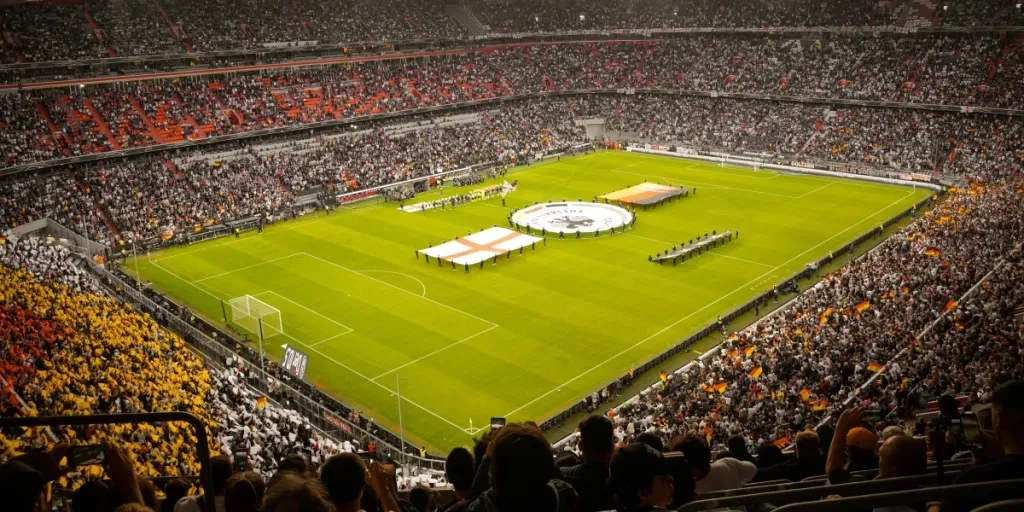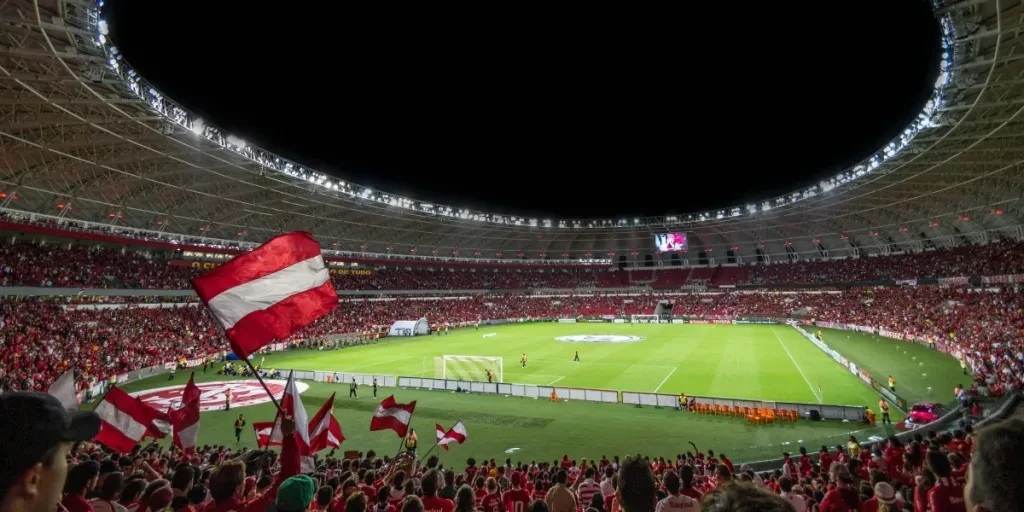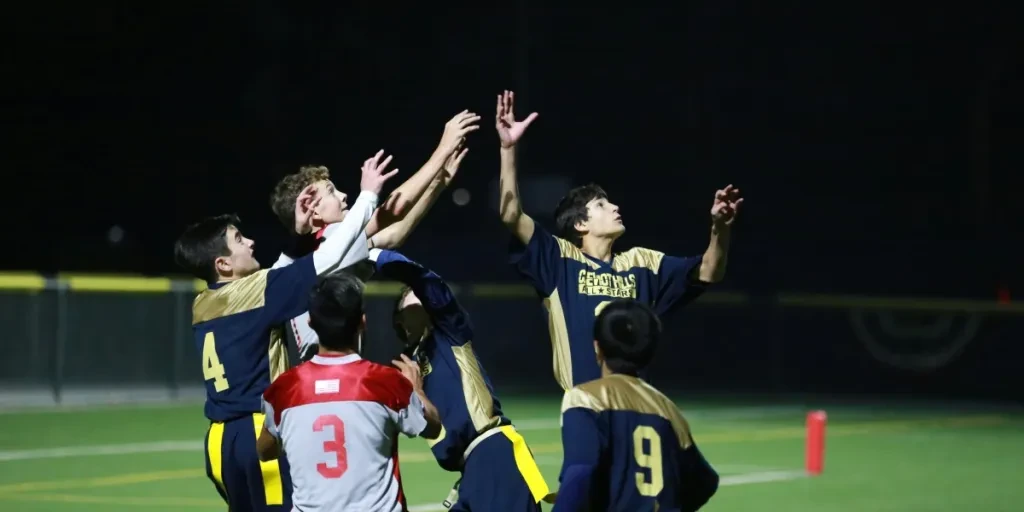Flag football, a non-contact version of American football, is rapidly gaining popularity across the globe. With its inclusive nature and lower risk of injury, it appeals to a wide range of participants, from children to adults. This article delves into the growing market of flag football, examining its rising demand, key players, and regional preferences.
Table of Contents:
The Growing Popularity of Flag Football: A Market Overview
Innovative Materials and Design in Flag Football Gear
Technological Advancements Elevating Flag Football
The Cultural Influence of Flag Football
Conclusion
The Growing Popularity of Flag Football: A Market Overview

Rising Demand and Market Size
Flag football is experiencing a surge in popularity, driven by its accessibility and safety compared to traditional tackle football. According to a report by Statista, the American football market, which includes flag football, is projected to reach $25.84 billion in revenue by 2024, with an annual growth rate (CAGR) of 7.11% from 2024 to 2029. This growth is indicative of the increasing interest in non-contact sports, particularly among younger demographics and families seeking safer alternatives.
The global football apparel market, which encompasses flag football gear, is also on the rise. According to Research and Markets, the market grew from $42.44 billion in 2023 to $44.76 billion in 2024 and is expected to reach $62.37 billion by 2030, growing at a CAGR of 5.65%. This growth is fueled by technological advancements in fabric and design, as well as the increasing participation of women and children in sports.
Key Players and Competitive Landscape
The flag football market is characterized by a diverse range of key players, including sports apparel brands, equipment manufacturers, and online marketplaces. Major brands such as Nike, Adidas, and Under Armour dominate the market with their innovative products and extensive marketing strategies. These companies invest heavily in research and development to create high-performance gear that enhances player comfort and safety.
Nike, for instance, has extended its partnership with the French Football Federation (FFF) through the 2033/34 season, reinforcing its dominance in the football apparel market. Similarly, PUMA has launched its 2024 National Team Kits, emphasizing sustainable textile technology and cultural heritage. These strategic moves highlight the competitive nature of the market and the importance of innovation and sustainability in gaining a competitive edge.
Regional Trends and Preferences
The popularity of flag football varies significantly across different regions. In the United States, the sport is deeply ingrained in the culture, with a strong fan base and substantial investments in football leagues. According to Statista, the American football market in the U.S. is expected to generate $25.84 billion in revenue by 2024, with user penetration reaching 36.2%. The high demand for football apparel and equipment in this region is driven by the widespread popularity of the sport and the emphasis on performance and comfort.
In Europe, the football culture is equally strong, with high sales of both replica jerseys and performance gear. The region is characterized by a keen interest in sustainable and ethically produced merchandise, reflecting the growing consumer awareness around environmental issues. Brands in Europe focus on innovation in materials and technology to cater to the demands of a discerning consumer base.
The Asia Pacific region is witnessing rapid growth in the football apparel market, driven by increasing interest in football sports, rising middle-class incomes, and greater exposure to international football events. Countries such as China, Japan, and South Korea are seeing a surge in both participation and viewership, which in turn boosts demand for football apparel. The market in this region is diverse, with local brands emerging alongside global players, tailoring offerings to suit local preferences and climatic conditions.
Innovative Materials and Design in Flag Football Gear

High-Performance Fabrics for Durability and Comfort
The evolution of flag football gear has seen significant advancements in the materials used, particularly in the fabrics. High-performance fabrics are now a staple in the industry, offering both durability and comfort. These fabrics are designed to withstand the rigors of the game, providing players with gear that can endure frequent use and intense physical activity. The use of moisture-wicking materials ensures that players remain dry and comfortable, even during the most strenuous games. This is particularly important in flag football, where agility and speed are crucial, and any discomfort can hinder performance.
Ergonomic Designs for Enhanced Mobility
In addition to high-performance fabrics, the design of flag football gear has also seen considerable innovation. Ergonomic designs are now commonplace, with gear tailored to enhance mobility and reduce the risk of injury. These designs take into account the natural movements of the body, providing support where it is needed most while allowing for a full range of motion. This is particularly evident in the design of flag football shorts and jerseys, which are now more form-fitting and flexible, allowing players to move freely and perform at their best.
Customization Options for Team Identity
Customization has become a significant trend in flag football gear, with teams looking to establish their unique identity on the field. Customization options include personalized jerseys, shorts, and flags, allowing teams to showcase their colors, logos, and player names. This not only fosters team spirit but also enhances the overall experience for players and fans alike. The ability to customize gear has also opened up new opportunities for businesses in the sportswear industry, as they can offer tailored solutions to meet the specific needs of flag football teams.
Technological Advancements Elevating Flag Football

Smart Wearables and Performance Tracking
The integration of technology into flag football gear has revolutionized the way the game is played and analyzed. Smart wearables, such as fitness trackers and GPS devices, are now commonly used to monitor player performance. These devices provide real-time data on metrics such as speed, distance covered, and heart rate, allowing coaches and players to make informed decisions and optimize their training regimes. The use of performance tracking technology has also made it easier to identify areas for improvement, leading to better overall performance on the field.
Advanced Safety Features and Equipment
Safety is a paramount concern in any sport, and flag football is no exception. Recent advancements in safety features and equipment have significantly reduced the risk of injury. Innovations such as impact-resistant helmets, padded gloves, and reinforced cleats provide players with the protection they need without compromising on comfort or performance. These advancements are particularly important in flag football, where the fast-paced nature of the game can lead to collisions and falls. By investing in advanced safety equipment, players can enjoy the game with greater peace of mind.
Integration of Augmented Reality in Training
Augmented reality (AR) is making its way into flag football training, offering a new dimension to player development. AR technology can create immersive training environments, allowing players to practice their skills in a virtual setting. This technology can simulate game scenarios, helping players to improve their decision-making and reaction times. The use of AR in training also provides coaches with valuable insights into player performance, enabling them to tailor their coaching strategies to meet the specific needs of their team. As AR technology continues to evolve, it is likely to become an integral part of flag football training programs.
The Cultural Influence of Flag Football

Flag Football in Schools and Community Programs
Flag football has grown in popularity in schools and community programs, providing a fun and inclusive way for people of all ages to engage in physical activity. Schools have embraced flag football as part of their physical education curriculum, recognizing its benefits in promoting teamwork, fitness, and sportsmanship. Community programs have also seen a rise in participation, with leagues and tournaments being organized to cater to different age groups and skill levels. The accessibility and low cost of flag football make it an attractive option for schools and communities looking to promote healthy lifestyles.
Media Coverage and Celebrity Endorsements
The rise of flag football has not gone unnoticed by the media, with increased coverage helping to boost the sport’s profile. High-profile events, such as national championships and international tournaments, are now being broadcast on major sports networks, attracting a wider audience. Celebrity endorsements have also played a significant role in popularizing flag football. Professional athletes and celebrities have lent their support to the sport, participating in promotional campaigns and even playing in exhibition matches. This increased visibility has helped to attract new fans and participants, further fueling the growth of flag football.
Flag Football as a Tool for Social Inclusion
Flag football has emerged as a powerful tool for social inclusion, providing opportunities for people from diverse backgrounds to come together and participate in a shared activity. The sport’s inclusive nature makes it accessible to individuals of all ages, genders, and abilities. Community programs and initiatives have used flag football to promote social cohesion, breaking down barriers and fostering a sense of belonging. The sport has also been used as a platform to address social issues, such as promoting gender equality and encouraging healthy lifestyles. By bringing people together, flag football is helping to build stronger, more inclusive communities.
Conclusion
The advancements in materials, design, and technology have significantly elevated the game of flag football, making it more enjoyable and accessible for players of all levels. The cultural impact of the sport is evident in its growing popularity in schools, communities, and media. As flag football continues to evolve, it is poised to become an even more integral part of the sports landscape, offering new opportunities for innovation and social inclusion. The future of flag football looks bright, with the potential to inspire and engage even more people around the world.




